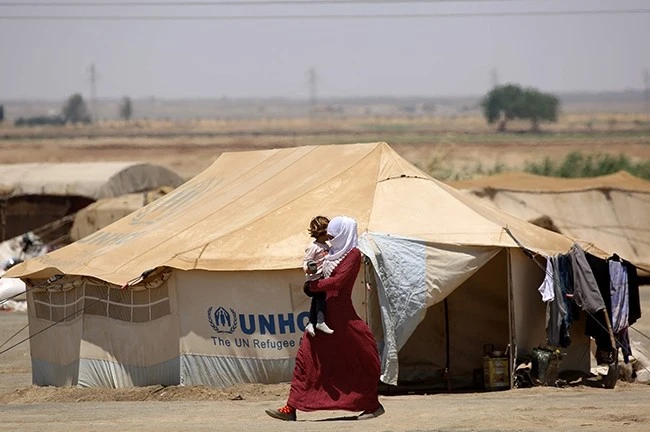The United Nations declared on Monday that it seeks $46.4 billion in the coming year to deliver life-saving assistance to around 180 million people grappling with desperate circumstances globally.
The United Nations painted a grim picture of the global humanitarian landscape in 2024, describing it as “bleak,” as conflicts, climate emergencies, and economic collapses wreak havoc on the most vulnerable populations.
While the world’s gaze is fixed on the Gaza Strip conflict, the United Nations underscored the urgency of major international aid operations in other hotspots, specifically pointing to the broader Middle East, Sudan, and Afghanistan.
With a decline in contributions, this year’s annual appeal and the targeted number of recipients have been downsized when compared to the metrics from 2023.
‘Humanitarians are saving lives, fighting hunger, protecting children, pushing back epidemics, and providing shelter and sanitation in many of the world’s most inhumane contexts,’ UN aid chief Martin Griffiths said in a statement.
‘But the necessary support from the international community is not keeping pace with the needs,’ he said.
The 2023 appeal aimed at $56.7 billion faced a substantial funding shortfall, receiving only 35 percent of the requested amount—a situation ranked among the worst in recent years. Nonetheless, UN agencies were able to provide assistance and protection to 128 million people.
Read also: Another Deep Crisis Is Coming – United Nations Warns
As we approach the final weeks of 2023, there’s a likelihood that it will mark the first year since 2010 to witness a decline in humanitarian donations compared to the preceding year.
Consequently, the UN has adjusted its appeal to $46.4 billion this time, directing its focus specifically on those facing the most severe needs.
Launching the 2024 Global Humanitarian Overview, Griffiths said the sum was nonetheless a “massive ask” and would be tough to raise, with many donor countries facing their own cost of living crises.
‘Without adequate funding, we cannot provide life-saving assistance. And if we cannot provide that assistance, people will pay with their lives,’ he said.
The appeal covers aid for 72 countries: 26 states in crisis and 46 neighbouring nations dealing with the knock-on effects, such as an influx of refugees.
The five largest single-country appeals are for Syria ($4.4 billion), Ukraine ($3.1 billion), Afghanistan ($3 billion), Ethiopia ($2.9 billion) and Yemen ($2.8 billion).
Griffiths said there would be 300 million people in need around the world next year — a figure down from 363 million last year.
But the UN aims to reach only 180.5 million of those, with NGOs and aid agencies targeting the remainder — not to mention front-line countries and communities themselves who provide the first help.
The Middle East and North Africa require $13.9 billion, the largest total for any region in 2024.
Beyond Syria, the Palestinian territories and Yemen, Griffiths also pointed to Sudan and its neighbours, and to Ukraine, Afghanistan, Venezuela and Myanmar as hotspots that needed sustained global attention.
Ukraine is grappling with a “desperate winter,” and there are apprehensions about the potential escalation of warfare on the other front, according to his statement.
Griffiths highlighted the struggle for the Sudan crisis to receive the attention it merits in foreign capitals, overshadowed by the ongoing Gaza war and Russia’s conflict in Ukraine.
Speaking in broader terms, Griffiths pointed out that climate change would increasingly influence the endeavors of humanitarian aid workers, prompting the need for improved utilization of climate data to optimize aid resource allocation.
‘There is no doubt about the climate confronting and competing with conflict as the driver of need,’ he said.
‘Climate displaces more children now than conflict. It was never thus before,’ he said.
